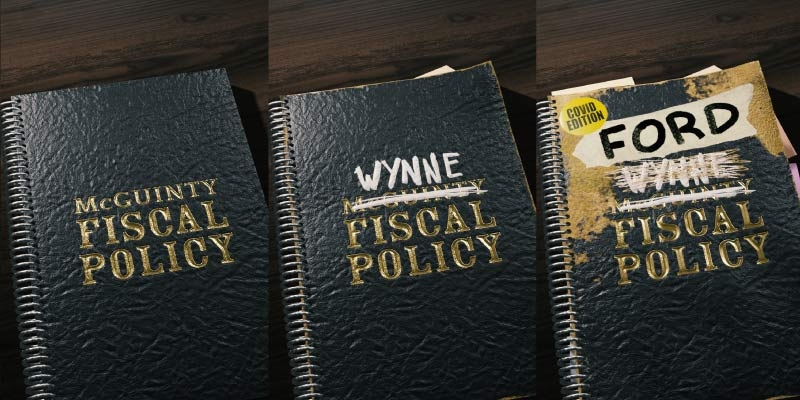Ford Government Fiscal Policy Approach Mirrors that of McGuinty and Wynne
— Published on June 8, 2021

Summary
- This bulletin analyzes the recent 2021 budget that Doug Ford’s Progressive Conservative government tabled in order to assess the extent to which it continues or changes the general fiscal policy approach of the Liberal governments of Premiers McGuinty and Wynne during the 2010s.
- The Ford government plan presented in Budget 2021/22 represents fiscal policy continuity rather than change, particularly with regard to program spending growth, deficit reduction, and debt accumulation.
- Excluding emergency COVID spending, the 2021 budget forecasts that nominal program spending will grow by a cumulative total of 8.5 percent over three years. By comparison, in the three years immediately following the 2008/09 recession, Premier McGuinty’s government increased spending by a total of 6.6 percent.
- The rate of nominal spending growth planned in the 2021 budget is therefore slightly higher than that which occurred under Premier McGuinty in the wake of the 2008/09 recession.
- The pace of deficit reduction forecasted in Budget 2021/22 is also similar to the rate of deficit reduction in the early 2010s. After adjusting for COVID spending and federal emergency aid, the Ford government’s fiscal plan projects average nominal deficit reduction of $2.41 billion per year over five years. By comparison, from 2010/11 to 2015/16, the McGuinty and Wynne governments achieved a nearly identical annual average deficit reduction of $2.38 billion over the five years.
Author:
More from this study
Subscribe to the Fraser Institute
Get the latest news from the Fraser Institute on the latest research studies, news and events.


